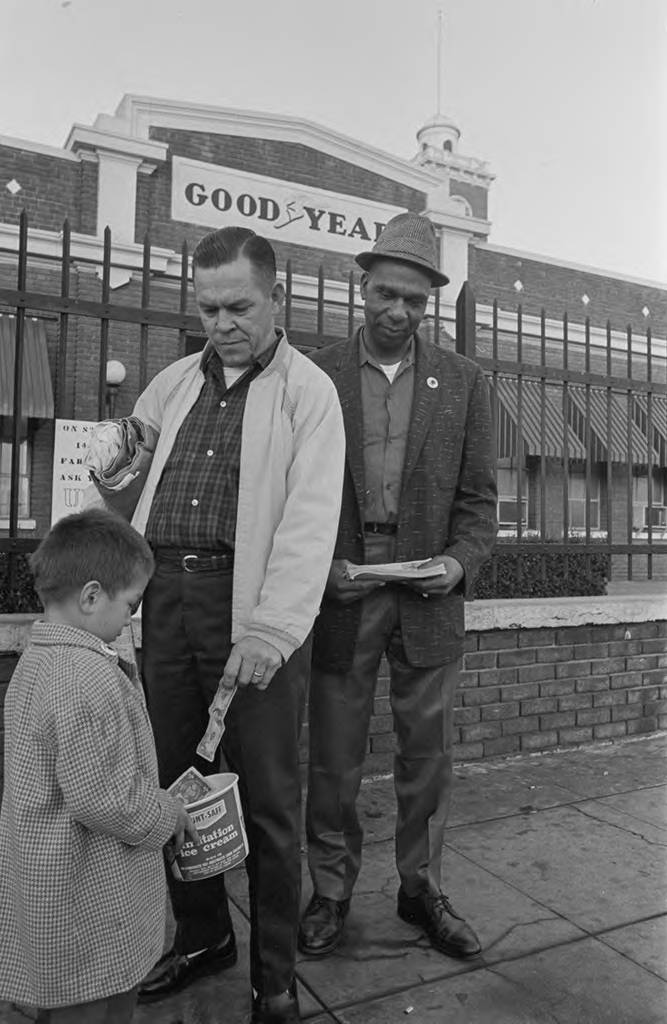Towards a Social Movement, Fall 1965
Towards a Social Movement, Fall 1965
Juan Guajardo, Luis Valdez, Manuel Vásquez, Félix Zapata, Pete Cárdenas, and protesters at an AWOC and NFWA picket. California, ca 1965 to 1966. Photo by John Kouns.
Due to their lack of resources and institutional support from a national union, the leaders and volunteers of the National Farm Workers Association (NFWA) had to figure out how to proceed and what to do next in the early stages of the grape strike. What appeared on the surface to be a weakness turned out to be an advantage of the NFWA over the better-funded AFL-CIO’s Agricultural Workers Organizing Committee.
Child collecting donations in front of Goodyear Rubber Company, Los Angeles, 1966
Boy collecting donations in front of Goodyear Rubber Company as part of a group of 150 strikers and relatives who traveled to Los Angeles to collect contributions from trade unionists. Los Angeles, November 1966. Photo by Emmon Clarke.
Marshall Ganz argues that the tactical choices of these leaders reshaped the organization in a way that expanded their strategic capacity, making the NFWA more flexible to respond to the challenges of the strike and re-shaping it into a farmworker social movement. Three areas were significant in that regard, according to Ganz. “While AWOC maintained traditional stationary picket lines, the NFWA leaders devised a new approach: roving picket lines. While AWOC organizers drew salaries and dispensed strike benefits from an AFL-CIO-supplied fund, NFWA leaders created a supporting network, making the most of the varied support it could provide. While AWOC told the story of the strike to itself, its members, and the public as just another labor dispute, the NFWA told a story of the birth of a new movement, rooted in specific ethnic, religious, and political traditions, and reach out to incorporate the legacy of the civil rights struggle.”
Three-year old Carmen Ramos Chandler holds a sign protesting against her mother’s arrest for blockading the International Bridge between Roma, Texas, and Ciudad Miguel Alemán, Mexico. Texas, ca. 1966. Photo by Emmon Clarke.
Tom & Ethel Bradley Center
California State University, Northridge
18111 Nordhoff Street, Northridge, CA 91330
Phone: (818) 677-1200 / Contact Us


